
TERRITORIAL FLORIDA
1821-1845
THE STRUGGLE FOR STATEHOOD
THE JACKSON TRANSITION IN TERRITORIAL FLORIDA:
On March
12, 1821, General Andrew Jackson
received his commission as military governor of Florida
from Secretary of State John Quincy Adams, later Jackson's Presidential rival. Adams entrusted
the job of bringing Spanish Florida into the American fold not because he would
be a popular choice of the Spanish, of course, but because Jackson knew the
region and would attract the confidence of those most likely to settle in the tropical
territory. Jackson accepted the appointment with some reluctance, for he
suspected his enemies in Washington would
relish isolating the popular General in the Florida wilderness. Jackson
disliked the almost dictatorial powers he was given to transfer Florida into American
hands.

It was not
until July that the red and gold banner of Spain
was unfurled for the last time in Pensacola as
the Governor of West Florida
turned over political control to Jackson.
The American visitors cheered as Jackson
entered the Government House. The General disliked his complicated duties. He
had less than one year to settle the hodgepodge of conflicting land claims of
British and Spanish titles. He had to oversee the peaceful transfer of Spanish
property to the newly arriving American colonists. He had to solve the numerous
bi-cultural problems between the two peoples, the least of which was the total
distrust the Spanish had of the Tennessean.


The change
from Spanish to American rule was not a smooth transition. The Spanish
population quickly realized the unruly settlers who visited their homes and
establishments had neither the money nor inclination to purchase their property
at fair market value. Why buy a house which must be vacated by the end of
December? The volatile Mayor of St. Augustine Juan Entralgo refused to cooperate with Jackson,
and when the Spanish Governor Don Jose
Callava protested Jackson's policies, Jackson threw him in jail.
Few Spaniards elected to remain under American rule. Many elected to strip their
homes of anything useful and burnt the foundations so the Americans were left
with ruins. Only a number of Minorcan families, who were used to being a minority in Saint Augustine, elected to stay in Florida. Many owned stores and inns which had value.
THE POLITICS OF THE TERRITORY OF FLORIDA.
The new Territory of Florida was second only to Georgia
in land area east of the Mississippi River.
This huge size, coupled with the state's under populated peninsular, posed
serious problems to the state's future development. Northern Congressmen feared
that Florida would be divided into two slave
states, thus disrupting the delicate balance of having equal slave and free states in the United States Senate. Jackson felt
there were more obvious problems: a lack of population, the absence of decent
roads and physical resources, and the presence of hostile Seminole Indians.
Territorial
Florida had a
simple governmental structure. The Governor, a three-year appointee of the
President, had to operate with a minimum of Federal funding. The Territorial
Council, elected by the people, could only borrow money, issue licenses, and
organize a state militia. A political protest in 1838 by one Colonel Charles Downing forced the
establishment of a more representative bi-cameral legislature, where voices of
rural farmers could be better presented. This reform was offset by the
isolation of most homesteads and their lack of political participation.
As the
population grew, the legislature began to charter counties with appointed
commissioners to handle local civil and criminal cases. The creation of county
courts furthered the growth of small towns. By 1824 a Court of Appeals was
established in Tallahassee
to handle major criminal cases. The process to organize future political units
in the territory was formalized.
POLITICAL CONFLICT STARTS IN TERRITORIAL FLORIDA
It was essential to resolve the territory's financial indebtedness so
that Florida
could construct the transportation and economic ties to the rest of the South.
The only forms of state revenue were taxes on land sales, license fees, and
poll taxes. In the first decade, almost one-half of the counties in East and West Florida failed to meet their tax return goals. It was
in these rural areas were small farmer feared the move to statehood would
increase their taxes and bolster the ambitions of large-scale planters.
Robert Gamble Set Up An Early Sugar Plantation on the Manatee River.
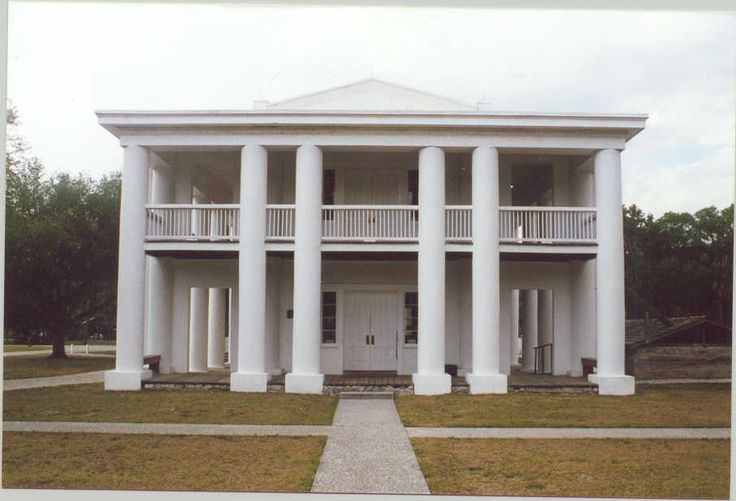
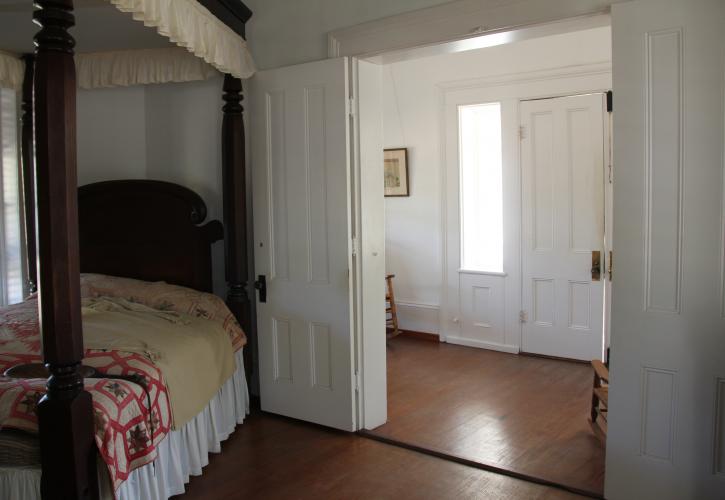
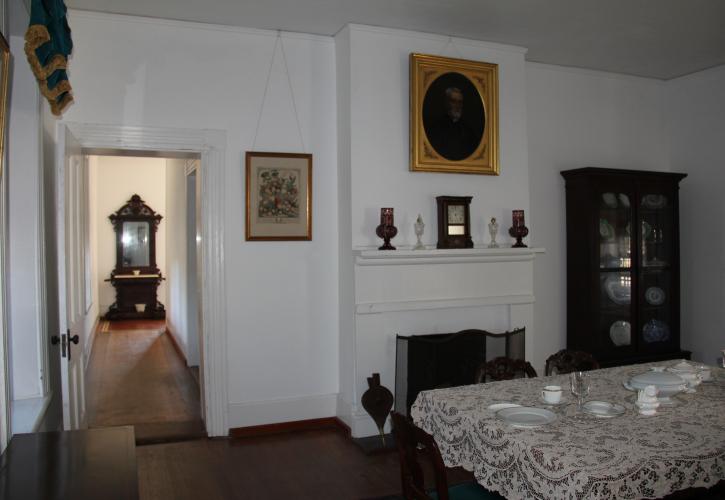
 Photographs from Florida State Park Service
Photographs from Florida State Park Service
Two
political groups soon developed out of this struggle to finance Florida's development.
Jackson had used his position to promote many of his political friends, the
most notable being Richard Keith Call.
Ironically, these Jacksonian Democrats,
benefiting from their location in Middle Florida
at the center of the plantation and political, often joined the Whig Party. Florida's Whigs supported
increased spending on railroads and state banks, which they deemed essential to
the maturation of the Florida
economy. East Florida, dominated by small farmers, disliked the willingness of
the Whigs to spend public funds on such economic projects.
The
anti-Call forces were led by two St. Augustinians - lawyer Robert Raymond Reid and sugar planter David Yulee Levy. They organized a
ferocious attack on Call when the Pensacola Bank, which Call endorsed,
collapsed, harming many small West Florida
farmers. These Democrats gained the support of frontiersmen with their
opposition to the planter aristocracy and appeal to less taxes.
The
election of David Yule Levy, a European Jew, in a traditionalist Protestant
wilderness, was an indication of the acceptance of the anti-Call platform.
Despite their belief in less spending, both Levy and Reid were staunch
supporters of Florida
statehood.


THE EARLY DAYS OF PLANTATION
FLORIDA
THE FLORIDA OF THE OLD SOUTH. By 1840, Florida had taken its place as a member of
the Old South. Its leading citizens, many of neighboring Georgia and Alabama, had formed economic and political
ties to all the institutions of Southern society. Florida was an agrarian
society and this predominance of agriculture, with its definable class and
caste, would leave an notable mark on Florida
history.
 The plantation leaders led Florida in wealth and
political power. There remained in most counties only the urban professionals
to challenge this plantation elite and many of them were firmly entrenched in
the cotton culture. The townsfolk represented a middle strata of shopkeepers,
merchants, artisans, and builders. The small farmer and the stock tender
represented the lower economic groups, while the black freedmen and the slave
held the least status and power.
The plantation leaders led Florida in wealth and
political power. There remained in most counties only the urban professionals
to challenge this plantation elite and many of them were firmly entrenched in
the cotton culture. The townsfolk represented a middle strata of shopkeepers,
merchants, artisans, and builders. The small farmer and the stock tender
represented the lower economic groups, while the black freedmen and the slave
held the least status and power.
By 1825, a
region of plantations was developing between the Suwannee and Apalachicola Rivers,
the location of the most fertile farmland. Two out of every three
African-Americans lived in these five cotton-growing counties of Jackson, Gadsden, Leon,
Jefferson, and Madison. It was here that successful Georgia
and Carolina
planters had started a prosperous farming region with slave labor. The earliest
farmers of this planter class produced the DuVals, Calls, Murats, Whites, and
Miltons who supplied much of the political leadership of territorial Florida..
THE PLANTATION
SYSTEM
. To the traveler of Florida's dirt
roads in the 1840's, there was an inescapable universality about this region
called Middle Florida. The main house perched on a
wooded hill verified the position of self-sufficiency which farm life provided.
Overlooking the barns and stables, the slave quarters and tool sheds, the
planter determined the operation of his estate much as a medieval lord. While
it was not an uncommon fancy for young planters to envision themselves as
knights of medieval England,
as in the romances of the popular Sir
Walter Scott, the reality of rural Florida was a life style that was rather
monotonous and difficult.
Like the Middle Ages, plantation life was highly regimented for both
the owners and the workers. From the sound of the cow horn at dawn to dismissal
call at sunset, both planter and slave had specified tasks to accomplish.
Successful procedures were usually copied by other farms until most planters
adopted a uniform policy. Thus, while relations between master and slave was
often personal and individual to each farm, there was great pressure to
practice uniformity in operations and no motivation or incentive to be innovative.
 ABSENTEE FARMING. Only in Middle Florida was there a
measurable number of absentee farms, most owned by professionals who lived in Tallahassee. On these
estates, overseers were entrusted with the day-to-day management of the farm.
There were strict rules in maintaining records of all farm activities, from the
quality and quantity of crops and livestock, to the health of the workers. It
was obvious everything on a plantation had a stated value, which reflected
directly upon the treatment of each slave, the future of every animal. Since it
was the goal of most overseers
to save enough money to start of farm in that vicinity, outright abuses and
dishonesty by overseers were infrequently reported.
ABSENTEE FARMING. Only in Middle Florida was there a
measurable number of absentee farms, most owned by professionals who lived in Tallahassee. On these
estates, overseers were entrusted with the day-to-day management of the farm.
There were strict rules in maintaining records of all farm activities, from the
quality and quantity of crops and livestock, to the health of the workers. It
was obvious everything on a plantation had a stated value, which reflected
directly upon the treatment of each slave, the future of every animal. Since it
was the goal of most overseers
to save enough money to start of farm in that vicinity, outright abuses and
dishonesty by overseers were infrequently reported.
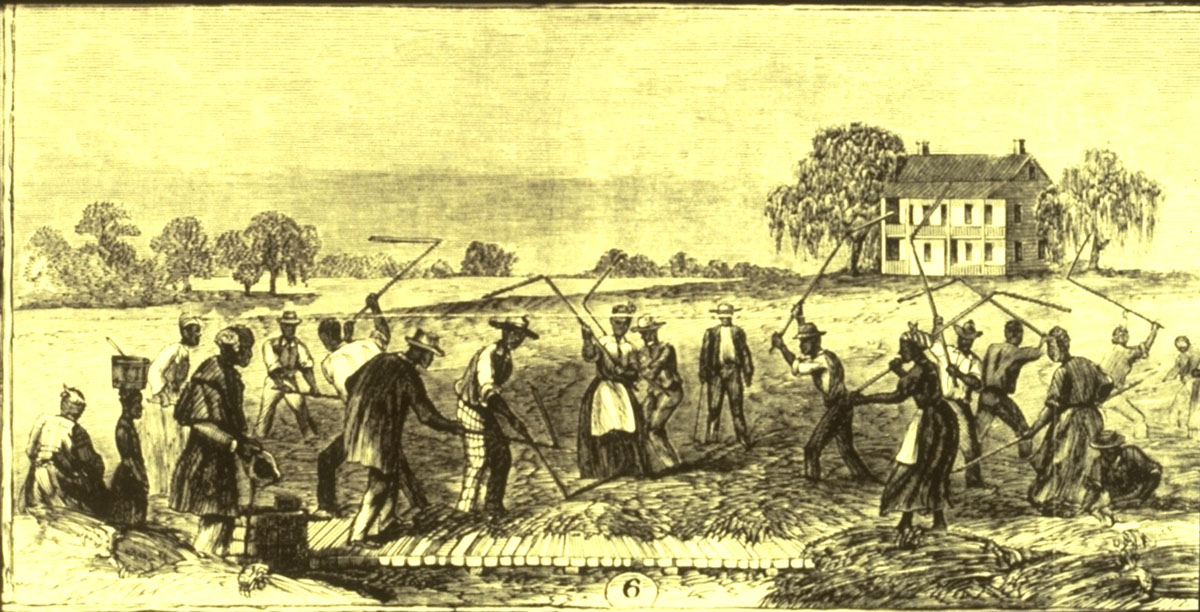
Floridians
liked to believe that it was impossible for an overseer or owner to rule with
the iron hand of a tyrant. There were state statutes for cruelty to slaves.
There were, however, few safeguards and plantation justice was so evasive that
it existed to the satisfaction of no one. Slaves who were unhappy usually protested quietly by sabotaging plantation activities in some way. There was no place to escape in rural Florida.
In 1854, D. N. Moxley, the overseer of El Destino, a plantation outside
Tallahassee, severely punished four slave women for lazy cotton picking. When
the girls tried to escape, a brother named Aberdeen slugged Moxley. Aberdeen was
arrested for attacking a white man, but one of the girls fled to Tallahassee to
her father, who worked for a businessman. A complaint was filed with George Jones, the owner of El
Destino. Jones agree to let the girls return to the plantation without
punishment, but Aberdeen
was flogged for his violence. Moxley protested that the decision had undermined
his authority and retaliated by refusing to let the women visit relatives and
friends on nearby farms.
PLANTATION
LIVING IN FLORIDA
Two of the best-operated plantations in Florida
were owned by the Folsom Brothers,
Tom and Bryant of Jefferson
County. They were
pioneers of the latest farming techniques and outspoken critics of many of the
cruel abuses of the overseer system. Cotton was their chief crop, but as was
the case in Florida's small farms, corn was raised for livestock and sugar cane
was raised along the river. Both Folsoms maintained their own blacksmith shops
and smokehouses.
 FLORIDA'S COTTON
KINGDOM: MIDDLE FLORIDA
FLORIDA'S COTTON
KINGDOM: MIDDLE FLORIDA
The Folsom
women presided over all operations in the Main House and adjacent facilities.
They directed a staff of maids, cooks, gardeners, and nurses, They directed the
sewing of clothing and the construction of household utensils. The older women
and children knit cotton and woolen garments. The indigo plant was used to dye cotton blue, while pokeberries (red)
and oak bark (brown) were other popular colors. Despite the image of refined
wealth, the Folsom women's only manufactured clothes consisted of some formal
dresses purchased in Charleston
for a fancy ball.


The Folsom
men were identified as kind owners. Unlike others, they allowed plantation
children, slave or freeman, the few pleasures of youth. When they weren't
fishing, chasing small animals, or picking berries, they were given small tasks
such as carrying water into the fields or locating the nests of stray chickens.
Hens were discouraged from this act of independence by allowing the kids to
roast the eggs. Another memory of children was the long ride back to the barns
on the coarse burlap sheets filled with the day's picking. Unfortunately, children
were usually terminated from casual activities before their teenage years.
Unlike
absentee farms, the Folsom properties were filled with active families,
celebrating holidays and birthdays. The two brothers staged contests to see who
could run the best Christmas party for the workers. Major holidays were best-remembered events in the lives of slaves. There was no work except for those
who prepared the food and gifts were distributed in the main house. A supply of
hickory wood soap was always kept by the door in case other planters brought
slaves with them to the parties. Everyone danced " the pigeon wing"
while Bryant Folsom played his fiddle.
The
Folsoms operated wedding ceremonies on their plantations despite the
nonexistence of lawful slave marriages in Florida. It was the Folsom's religious
beliefs that brought them to the conclusion of participating in the common
slave practice of "jumping over
the broomstick." The Folsoms even consented to the rather rare
practice of intra-plantation marriages, a custom that contradicted the practice
in Florida of
selling individual slaves regardless of marital status.
SLAVE LIFE IN EARLY FLORIDA
No institution in
American history divided our society more than the existence of slavery in the United States.
Slavery was a major part of the Florida
economy and culture until the Thirteenth Amendment ended the practice.
According to theBlack Codes of
the 1828 Florida
Constitution, the African-American slave was personal property. He could be put
to death for killing a white person, committing arson or rape or insurrection.
For lesser offenses, he could be physically nailed to a tree by the ears and
given thirty-nine lashes. He was a prisoner to the land he did not own. He had
to get permission from his owner to leave the farm to go to church or town.
Even a visit with a family member required previous arrangements. Despite the
offense, he could not testify in court without the acceptance of his owner.

Only the
kindness or economic selfishness of the slave-owner could make any aspect of a
slave's existence bearable. Slaves knew that the existence of laws of cruelty
were mainly for the protection of slave owners, not the slave victim. A planter
working slaves on Sunday would fine the wrath of fundamentalist neighbors more
a deterrent than the meager two dollar fine. Unlike the Caribbean and Latin America, slaves were the private property mainly of individuals or partnerships. The Territory of Florida owned no slaves.
Yet,
students of Florida
history are generally confused by the lack of recorded slave rebellions in the
state. They may note that black
freedmen selected Florida over living
in Alabama or Mississippi. There are probable factors for
this situation. Florida's
plantations were small and rarely operated by overseers. The entire plantation
system was a closed society, with such structure that it was extremely
difficult for a slave to escape without detection or for a slave to accumulate
weapons and a strategy of vengeance. The free states in the North were far too distance to flee on foot. Only the coastline and the possibility of a Caribbean bound ship presented a possible opportunity for escape.
On the
other hand, slaves were trained in the occupation and skills for their owners.
Thus, slaves had as diverse a range of skills as the white population. Freedmen
engaged in many jobs despite attempts to limit their skills and goals. Freedmen
were also still subjected to whippings and fines for abusive language to whites
or for associating with slaves without permission. If a freedman was found
idle, he could be forced to work.
The system
even encouraged freedmen to return to slavery. A particularly tragic story is
that of George Proctor of the Bahamas, a talented freedman who came to Tallahassee in the 1840's
and constructed many of the city's first homes. Excited by the Gold Rush, he
mortgaged his family to go to California.
When he went broke in the West, his family was sold into slavery in Florida.
On the well-managed plantations,
slaves lived in small cabins, heated by fireplaces. After the morning call,
there was just enough time to eat breakfast, prepare lunch, and reach the
wagons heading into the work fields. Most slaves labored until four o'clock
when they were released to tend their own vegetable gardens and chickens around
the cabins. There was little privacy or free time, and the evening meal was the
only time a family was together. Florida farms
were smaller than those in neighboring states which meant specialized
occupations like blacksmiths and maids were less common on Florida properties than elsewhere in the
South. It was not uncommon, however, to see slaves hired out to work in town construction
or public roads. Only the most skilled slave could find a way to buy his
freedom. Many of the slaves who gained their freedom was due to the retirement of their long time owners.

Slavery
offered little but the security of a place to live and a job. Slaves could not
be fired so aging slaves spent their remaining days doing odd chores. The
health of a slave was important when they were young and strong, but medical
help dwindled as a slave became less valuable. Planters tended to be more
sympathetic to slaves than small farmers and town workers, who viewed slaves as
economic competitors. Another element that is often neglected by historical
research is the large percentage of slaves who gained skilled knowledge on
smaller farms. When the Civil War started, slaves took over the operations of
both farm and town across Florida.
SLAVERY: THE INSTITUTION THAT DIVIDED AMERICA
As significant as the attitudes and beliefs fostered by by slavery as a
social system was the systematic destruction of the slaves' African heritage.
Perhaps no where else in the Americas
was slavery practiced in such a decentralized and capitalistic and
individualistic manner to terminate most remnants of the black man's origins.
Slaves were not allowed to maintain any identifiable African customs, nor speak
any African words, nor practice any African faiths. In Florida slaves were mixed without
consideration to African tribal culture. Only the common heritage of bondage
brought together the African-American after several generations of slavery in
the United States.
Slaves
were sold either as individuals or family units, with no restrictions applied
at the marketplace except the beliefs of the seller. Slave mothers raised
children until they were old enough to work the fields as waterboys or helpers,
although communal child-rearing did exist in some farms. Fortunately for the
slave, Florida's
small farm unit often preserved the slave family unit more than large
plantations. Living conditions, however, were very basic on small farms, but
often everyone had the same diet: salt pork, corn bread, locally grown greens,
corn coffee, and cane molasses. Southern diets were high in starch and empty
calories.

Education
was simply limited to the whims of the master, who sometimes encouraged
learning how to read the Bible. The
Church was the only acceptable institution where the African-American
discovered unity, solace, and identity. In large towns, slaves and freedmen sat
in the back galleries of the church, but in rural areas, like West
Florida, black preachers were allowed to visit slave quarters to
conduct services. Baptisms and singing were the most popular aspects of
Southern spiritualism.
Florida's slaves had some distinct feelings about
escape. The North was distant, but the Florida
coast was never more than ninety miles away, and stories of escape to Cuba and the Bahamas where slavery had been
abolished were common. The southern half of Florida was a wilderness inhabited by the
Seminole Indians. Southern planters feared these avenues of escape and
established at network of patrollers around the state. These hired poor whites,
with their hunting dogs and horses, were always prepared to chase down a
fugitive slave for profit. Planters consider trying to escape a natural thing;
patrollers considered it a business.
LIFE IN NON-PLANTATION FLORIDA
THE FLORIDA
CRACKER Florida was the least populated Southern
state in the least populated region of the country. The Florida peninsular swallowed up the early
settlers and the sandy soil was not conducive in most areas to successful
plantation life. The small farmer adopted to the tropical summer heat. Many of
the early pioneers were Scots-Irish
and non-Anglican English from Georgia
and Alabama, who found the inexpensive lands
outside Middle Florida
ideal for a new life. The rich soils of the Tallahassee Hills was the only Florida region conducive to the large-scale plantation
economy found in the Tidewater of the Carolinas.
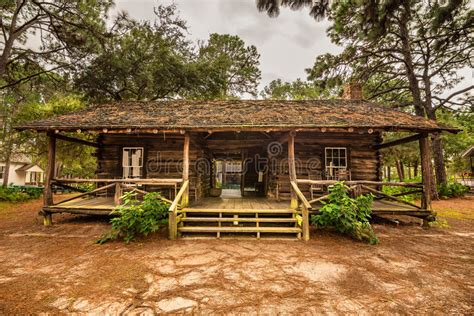
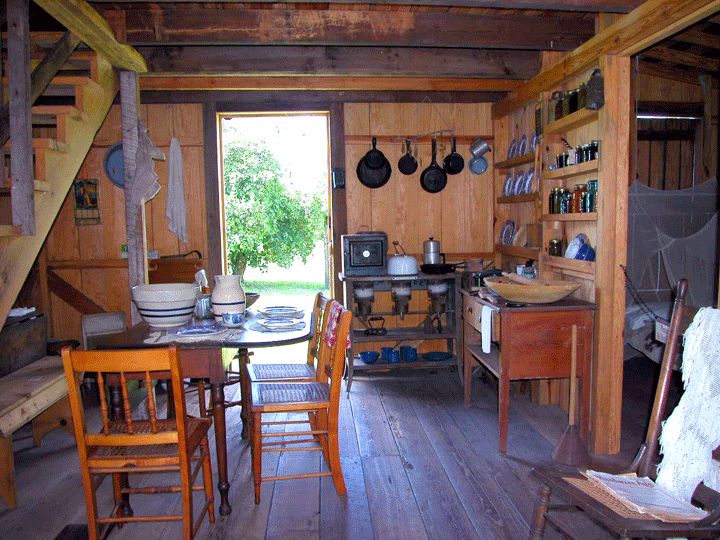
The
Florida Crackers gained their name
either from the sound of their whips, driving mule and oxen teams, or by their
hard meal biscuits they ate by the ton. Unlike the town folk, the crackers were
predominately Baptist or Methodists, often worshiping in homes or outdoors
until they were numerous enough to construct a chapel. Above all, they were
individualists who believed a closely knit household and hard labor could
conquer any obstacle.
Their hope
for eternal salvation and a decent crop were tempered by their realistic
outlook to the unyielding demands of frontier life. Every hour meant making
decisions that could affect the success of the household. It was this freedom
to control their destiny rather than their possibility of becoming a rich
planter that was the source of personal pride. The farmer felt he was the equal
of any other farmer. If the farmer did not participate in Territorial politics,
he had a firm belief in representative institutions.
CRACKER LIFE IN EARLY FLORIDA
The small farmer feared the arrival of planters and investors and
Northern speculators. He knew the arrival of these groups signaled the end of
their independence and political control. Even by 1850, there was still space
in East Florida and West Florida, for a
homesteader to escape the proximity of neighbors. If the initial farm was
successful, the log cabin was usually replaced with a two-storied frame house
of split-sided logs and a big front verandah. In the backyard was the familiar
tool shad and barns. Around the sides were the vegetable gardens, chicken
coops, and hog pens.
The
frontier farmer was poor but quite proud of his subsisting wy of life. His
menu came from the crops and livestock of his labor, supplemented only by a
weekend outing to town or a fishing trip to a lake or the shore. Meals were
generally cooked in skillets on scaffolded stoves of pine logs, usually located
in a kitchen separated from the house by an open breezeway. Hog grease was used
as both a soap and cooking oil.
The
monthly trip to the market produced any other need belongings. Before the
suppression of the Seminoles, it was not usual for homesteaders to form a
convoy of wagons to market. It protected the families, provided companionship,
and solved wagon breakdowns in the sandy roads. A trip to the county seat was
the main source of entertainment and banjo and fiddle music filled the air
around the marketplace.
Community
efforts like house-raising, logrollings, woods burning for open pasture, and
corn chucking were both social events and economic necessities. Any family in
need found many volunteers and travelers could be assured of a place to stay if
a storm curtailed travel.
Next to
the rifle and the ax, the Bible represented the Cracker way of life. Religion
always preceded the arrival of a circuit riding preacher or the construction of
a church. A typical religious trail-brazer was Georgia-born Methodist pastor Isaac Boring, who received the
Alachua circuit in 1828. Every three weeks, Boring rode his horse from St. Augustine to Jacksonville
and then cross the Alachua prairies after a boat ride down the St. Johns River. Despite the danger of Indian attack, he
never took the Bellamy Road, because he anted to
reach isolated farmers. Circuit riding
required a crusading spirit and a strong will, but by 1846, thirty-two
Methodist preachers were circuiting the entire populated state.
Once the
rural church was built, it became the focal point of Cracker activities. Even
with a building, many groups were so small and so poor, they relied upon
circuit riders. By 1845, the majority religion was the Baptist faith, bolstered
by its simplistic, associational form of origination and its voluntary
ministry. The Methodists easily ranked second.
THE CRACKER VIEW IN FLORIDA
The mind of these Southern yeoman, who made up the majority of Florida's white
population, was rarely captured in publications and personal records. Their
tribute was their hard labor and accomplishments, but various wills and
occasional letters reveal their awareness of political and economic conditions
in Florida.
It is not surprising that the Cracker questioned the dominance of the planter
aristocracy in state politics and the lack of public facilities for the small
farmer. Yet, the farmer remained a staunch supporter of most Southern
institutions including slavery.
Contemporary
publications about the Florida
Cracker tends to picture the humorous aspects of simple rural life and their
acceptance of such inexpensive pastimes as cockfights behind the barn, weekend
fishing trips, and courtship in the country. Literature was mostly compiled by
city dwellers and planters so it is not surprising that small farmers were
viewed as contented, ignorant, and provincial. The farmers' pride, endurance,
and stability were rarely described for Northern readers. The small farmers
survived the Civil War and rebuilt the South long after the strength of the
plantation society collapsed.

![]()






![]()
![]()
![]() The plantation leaders led
The plantation leaders led ![]() ABSENTEE FARMING. Only in Middle
ABSENTEE FARMING. Only in Middle 
![]()


![]()
![]()
![]()

